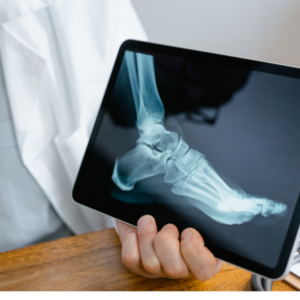Break Down: A Nation At Risk For Bone Fractures

Break Down: A Nation At Risk For Bone Fractures
October 26, 2022
So raise your hand (if it’s not painful) if you’ve broken a bone in your later years. If you have, you’re not alone. In fact, according to a recent op-ed in The Hill, we’re in for a looming public health crisis in the coming years due to the incidence of osteoporosis among older adults. Around 10 million Americans currently are at risk of bone fractures due to an osteoporosis diagnosis, though the illness is often considered a “silent disease,” as many do not realize they have it until a weak bone fractures, often in either the hip, wrist, or spine. In fact, if you have osteoporosis, you don’t even need to be engaged in risky or dangerous activities. It’s often the case that those with osteoporosis can fracture a bone just by doing such ordinary things as sneezing, coughing, stretching, or bending. For prior agebuzz posts addressing osteoporosis, carefully click here.
So who’s really at risk? Well, as one expert suggests, “Everyone has a skeleton. Therefore, everyone should be thinking about their bone health.” With a bit more detail, it’s clear that women are at greater risk than men, though men do clearly get osteoporosis. In fact, women are 4 times more likely to get an osteoporosis diagnosis than men (often as a result of estrogen loss during menopause) and women are more likely to get a fracture once they have an osteo diagnosis. In fact, the data show that in 2017-2018, almost 20% of women over 50 developed osteoporosis, which is a higher percentage of women than those who had heart attacks, stroke, or breast cancer combined. More than 50 million Americans are considered to be at risk for osteoporosis, and 80% of those are expected to be women. In fact, following a hip fracture, 50% of women never walk again and 20% must enter a nursing home. So this is clearly a serious and potentially debilitating- and even life-threatening- diagnosis for older women. Also at risk? Those with a diagnosis of arthritis, and now, because of new research, we know that one in four patients with rheumatoid arthritis also have osteoporosis.
So what can you be doing to protect yourself and preserve your bone strength? Well, we know that if you’ve already had one fracture, you are at 5 times greater risk for a second fracture. This means you should be under the care and treatment of an orthopedist or some other fracture specialists to make sure your diet is appropriate, your calcium and vitamin D intake is at sufficient levels, and you are participating in weight-bearing exercises (which can literally mean walking) to better support your bone strength, along with possible medications that may be prescribed depending upon your situation. You will also be wise to get regular bone density scans, especially if you’re a woman over 65 or a man over 70. These scans are painless, inexpensive, and effective, though not done so frequently because Medicare cut back reimbursement for scans in doctors’ offices. There is literally a bill now sitting in Congress to require Medicare to raise reimbursement for these important scans.
One other thing you can be doing? Eat prunes! A recent study published in Advances In Nutrition found that eating 5-6 prunes daily can preserve bone mass and bone density and arrest the development of osteoporosis. Apparently, prunes are known to contain anti-inflammatory compounds, and inflammation is implicated in bone loss. Prunes also contain other minerals and vitamins that are likely to have a favorable impact on bone preservation. To find out more, open a bag of Sunsweets and read more here.







